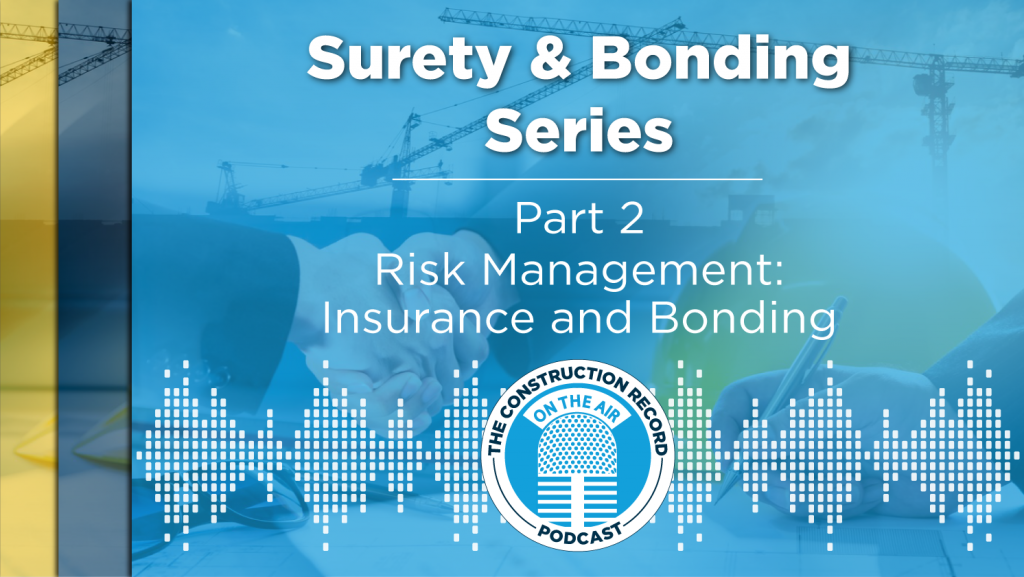Construction insurance rates are going up. And while it may seem arbitrary, insurance experts say there are reasons rates have gone up and it isn’t just happening in the construction sector.
Insurance experts at FCA Insurance Brokers say rates have gone up for all industries across the board and it’s likely to stay that way until at least the end of this year.
“A lot of contractors are probably experiencing some frustration with the market and it really goes to that concept of a ‘soft’ or ‘hard’ market and right now we are situated in a very hard market and it’s been going on for the past 18 to 24 months,” said FCA vice-president of surety Andrew Cartwright in an interview during a recent The Construction Record podcast.
He expects rates to continue to be higher than normal until Q4 this year and maybe into next year.
Cartwright said rising premiums are because insurance companies are experiencing losses and seeing poorer returns on investments which they offset by raising rates.
Jamie Collum, vice-president of FCA, said rates are up across all industries. In construction they have gone up 10 to 20 per cent. Other sectors are seeing higher increases or are not able to find insurance at all.
“For our clients, one of the tough things to understand is that you are a great longstanding company, you’ve been in the industry 15 to 20 years, you don’t have claims yet year after year you are being asked to pay more money,” said Collum.
He explained it isn’t specifically construction losses fuelling the increases, but a broader industry issue. For example, extreme weather like a major hail in Calgary that happened earlier this year causes a spike in claims and all that filters down into premium costs.
Collum strongly encouraged contractors to reach out to their broker months in advance to answer questions so they can be well prepared to negotiate a better rate.
If rising rates wasn’t enough of a challenge, Collum and Cartwright noted insurance requirements have also changed. The most commonly used standard construction contract in şÚÁĎłÔąĎÍř was recently updated to require double the standard limits on general liability and auto liability insurance, something Collum said he expects to eventually be required by all, not just general contractors. The documents also require contractor pollution insurance and drone coverage.
Collum also explained that modern construction has necessitated things like cyber insurance. While records, documents and other data used to be stored in physical filing cabinets, they are now often stored digitally and are targeted by criminals.
“They are finding a way into your system and their goal is to just shut it down,” said Collum.
The criminals then often encrypt your data and hold it ransom.
“A cyber insurance policy can either pay the ransom or sometimes get you back up and running.”
Criminals have also become more and more sophisticated with social engineering tactics.
They will do “phishing” attacks where they will research a company, replicate their email style and attempt to obtain valuable information like passwords or payment details.
Collum said several large contractors and even some municipalities have been fooled recently by these kinds of attacks.
“It is a really serious issue and something that you should be considering,” said Collum.
While insurance may be a hard market, Cartwright explained bonding has been in a soft market. He said the industry had seen more than a decade of solid profits with some recent slowing. While there was some uncertainty around how COVID-19 would impact construction, companies have fared well with construction being deemed essential and the government providing assistance like the wage subsidy or loan programs.
“That soft market has continued and presents good opportunities for contractors looking to go out and establish their first bond or looking at larger work,” said Cartwright.
And more good news could be on the way for bonding. Collum noted while prompt payment legislation has been slow to roll out, the accelerated flow of cash will boost contractors’ ability to obtain bonding.
“With money coming in fast, you can work faster and stronger, which in turn leads to more bonding, so bigger jobs and more jobs,” Collum said.
For more on this listen to The Construction Record podcast here.
The Construction Record: Episode 118: Surety and Bonding (Part 2)



Recent Comments
comments for this post are closed